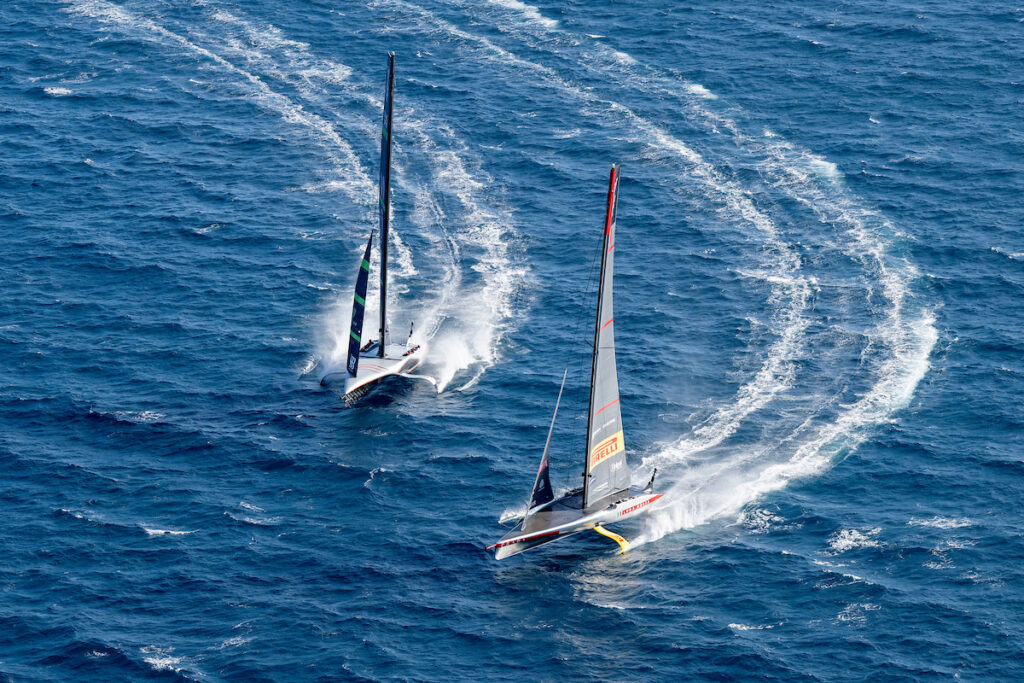
If you can’t out run them, take them out at the knees.
After a dramatic drift off between INEOS Britannia and Luna Rossa Prada Pirelli, the two battling challengers of the Louis Vuitton Cup Final, was called off on Saturday when the time limit expired, the AC75s returned to the racecourse the following day with the wind in full anger, for two top-of-the-range races. While there have been more than enough races at the opposite end of the range to show the AC75s can race at 6.5 knots it was finally time to show what they could do at 21—or more.
As the teams paced back and forth through consecutive delayed race starts, there was an ominous clue something was amiss on Luna Rossa Prada Pirelli with the crew craning their necks aloft. With less than 10 minutes remaining to the start, starboard helmsman Jimmy Spithill climbed out of his cockpit, walking around the front of the mast and looking upward, it then obvious there was a major issue—broken top battens poking through the mainsail skin.
Minutes later, with the chase boat aside, and the mainsail strip underway on the Italian’s silver AC75, the race committee finally passed the “wind test” and the race was a go. For the Italians, it was simply of race of time to get a backup mainsail bent on for the next race, and the British of INEOS Britannia, it was an easy point when the race committee handed the Italians their disqualification (for receiving outside assistance once the race went live).
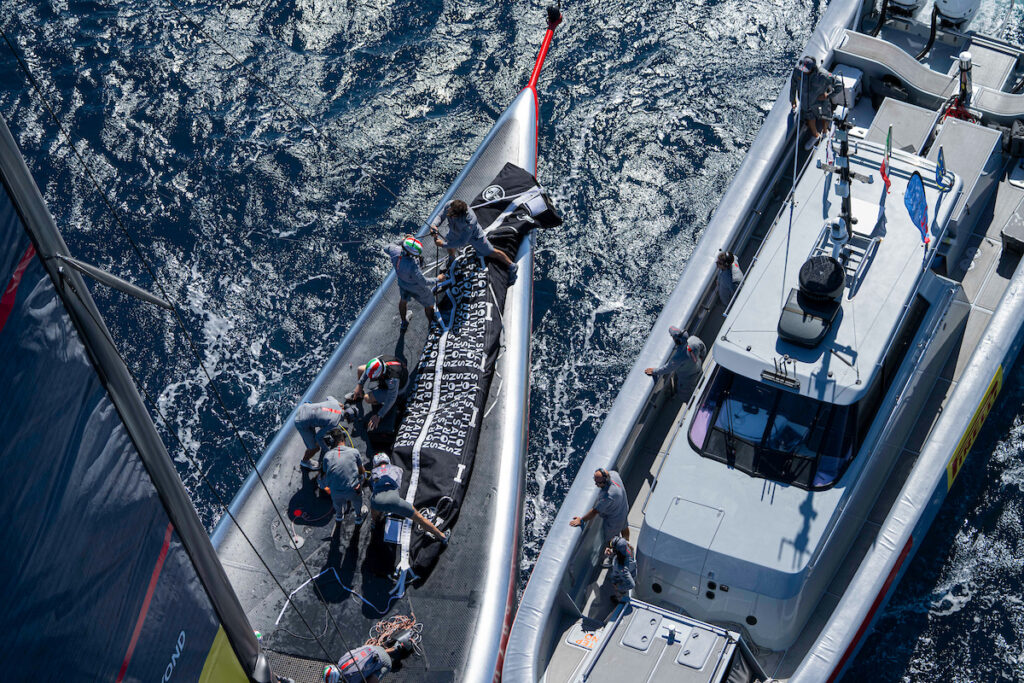
The breakage was a serious let down for race fans hoping for another high-speed, high action race, but the patient spectator was then treated to the most compelling race of Barcelona yet.
Match 4, A Match Racing Sizzler
With the wait finally over, the Italians entered with port entry and were immediately targeted by the INEOS Britannia, entering at 44 knots. Luna Rossa jibed to starboard as the two came together and helmsman Ben Ainslie was quick to fire the protest button—a hint of more to come and a more aggressive strategy for dealing with the Italians: Luna Rossa has yet to be passed once ahead, so take the gloves off in the starting box.
The umpires, ashore and watching on an array of screens with copious streams of data, were quick to green flag that one, but the British continued their attacks, pushing the Italians to the left-end of the starting line and matching tacks back to the right. Trailing the Italians at 45 knots, the setup for the next moved had been practiced in the simulator hundreds of times. A tack for Luna Rossa would have the set up above the layline to the starting line, and a jibe made them an easy target for the British.
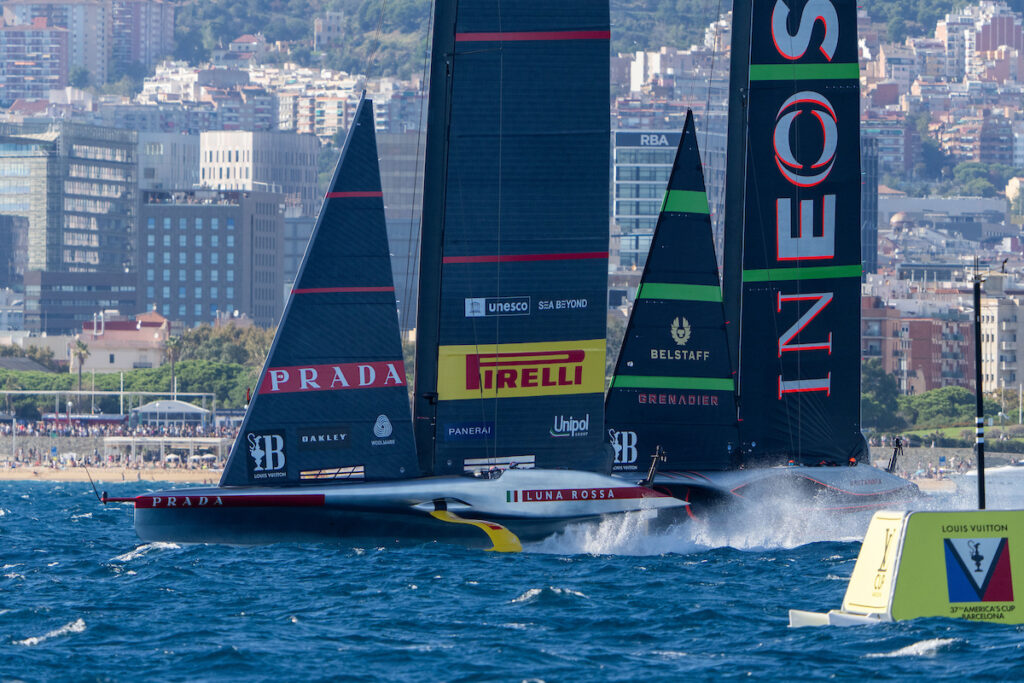
As Luna Rossa slowly jibed and came across INEOS’s bow it looked as though the British had them exactly where they wanted, they triggered the protest button again, certain they had the Italians copping a penalty. Green-flagged again with a precision call from the umpire booth that Luna Rossa had completed its jibe in the nick of time. With 15 seconds to the start, the Italians were strong to leeward, doing 35 knots to the British 28, and as they simultaneously struck the line, the Italians were a knot faster and able to flick the INEOS off to the right.
As Britannia charged away to the right Ainslie was still fuming about the no-call penalty, but the match was about to get spicy again.
Off the right boundary, Luna Ross had the cross and tacked ahead of the Brits, which had just enough pace to dive to leeward and try a hook and another shot at the protest button. That one too was denied and INEOS tacked away again to the right boundary. Luna Rossa let them go and crossed ahead to get through the first gate with a 4-second advantage.
With a split the race was on again, both boats streaming down the course at nearly 50 knots—cavitation speeds. Luna Rossa had the first downwind cross by a slim 135-meter lead, but through the next gate, the lead was up to 6 seconds.
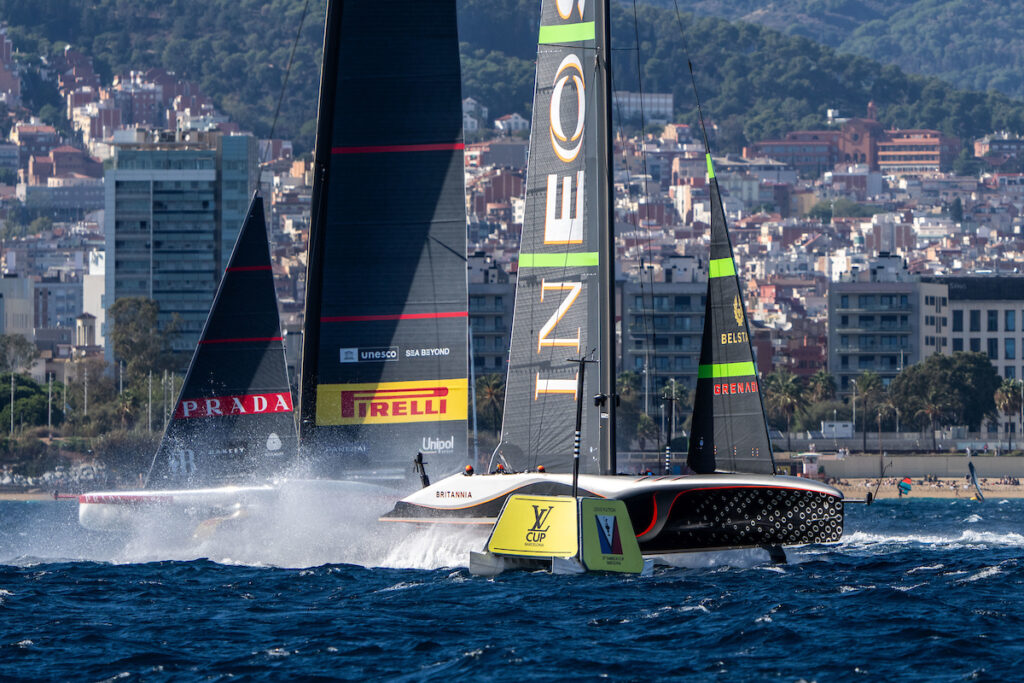
Split again at the gate, with Luna Rossa going right and INEOS Britannia left briefly, they intersected again minutes later with the Italians defending with another slam-dunk tack. INEOS port helmsman Dylan Fletcher said he thought he had a chance at a hook and went for it. With Ainslie goading him on from his starboard cockpit, “Keep going Dylan, keep going!” Fletcher tried a few luffs, but was denied the penalty again. His frustration with the calls was for all to hear: “This is a joke, umpires.”
Coming out of the exchange, the unflappable Jimmy Spithill and Francesco Bruni, locked down the race with a series of perfect covering tacks, pinning the British to the right boundary and leading through the third gate with a 5-second lead. A prompt jibe after the gate created another split. Luna Rossa added another 6-seconds by the time both boats were through the next gate, and at the next intersection were a whopping 300-meters ahead. Their lead was up to 19 seconds and 400-plus meters at the next gate, and then 20.
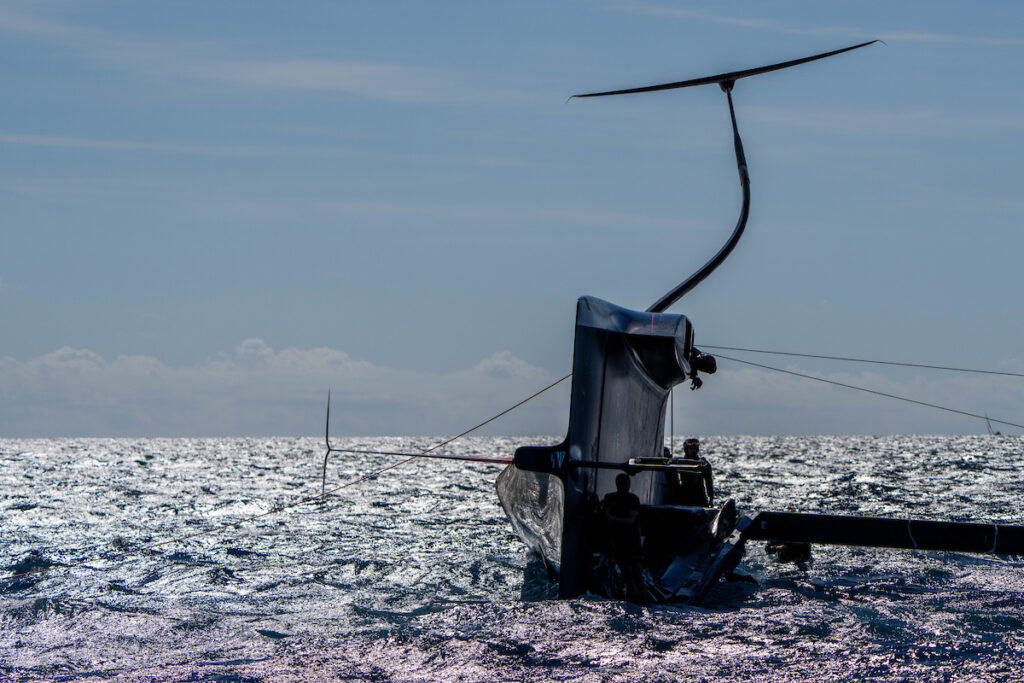
Swapping sides of the course as both boats went boundary to boundary on the final upwind leg the British hooked into one final shift at the top of the course to reduce the Italian lead to less than three boatlengths and a 6-second delta through the mark. With a long drag race down the run, the INEOS brought the match back to the middle of the course to set up a high-velocity jibing duel, but the Luna Rossa had just enough breathing room to nail its final jibe and lead the British through the finish line—by 4 seconds.
With a win for each team the Louis Vuitton Cup Final’s second day wrapped where it began—a tied series at 2 points apiece. To quote the race commentary team, as the Finals come closer to first-to-seven, there is literally, “Nothing in it.”









